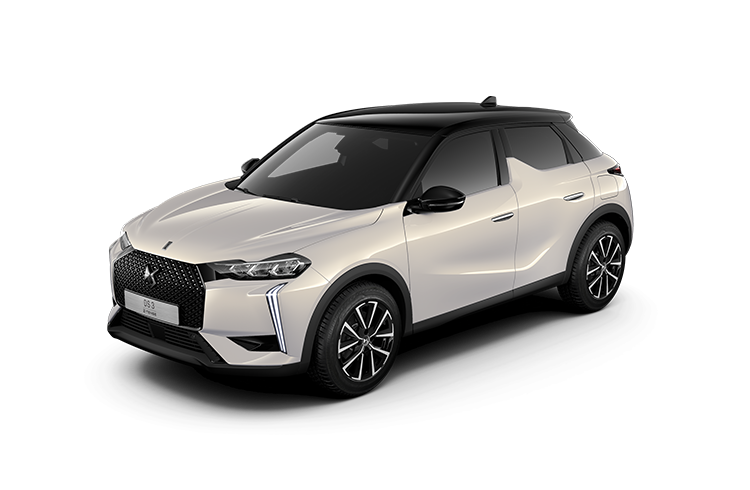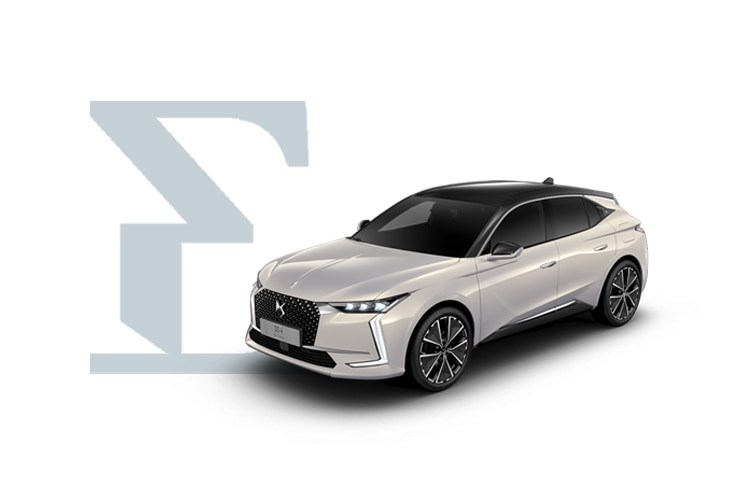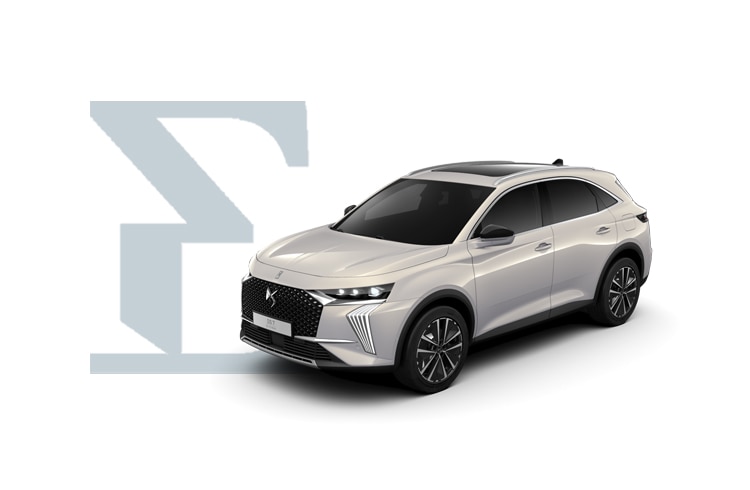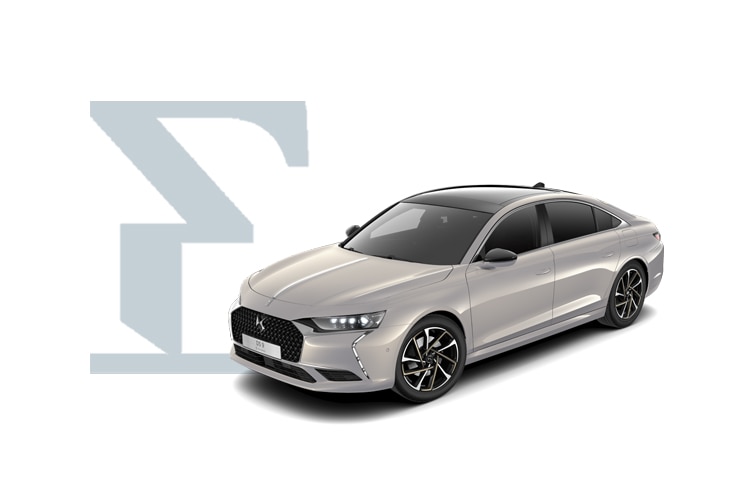
ECO-EFFICIENT TECHNOLOGIES
RESEARCH & INNOVATION
E-TENSE TECHNOLOGY
Electrification by DS Automobiles

Technology inspired by Formula E
DISCOVER OUR E-TENSE RANGE
PURETECH PETROL ENGINES
More compact, lighter, more powerful
PureTech petrol engines help you control your fuel consumption while boosting the performance of your DS vehicle.
Our engineers were able to achieve a significant reduction of fuel consumption by reducing the size and weight of our engines and incorporating innovative low friction materials.

Cleaner engines
BLUEHDI DIESEL ENGINES
The combination of efficiency and driving pleasure

Latest generation pollution control system
The oxidation catalyst converts unburnt hydrocarbons (HC) and carbon monoxide (CO) into water (H2O) and carbon dioxide (CO₂).
The SCR (Selective Catalytic Reduction) catalyst eliminates 90% of the nitrogen oxides (NOx) by transforming them into water and nitrogen through the addition of AdBlue®.
THE WLTP STANDARD
A more realistic gauge of fuel consumption
The WLTP (Worldwide Harmonised Light vehicles Test Procedure) is a way to approve vehicles for sale in the European Union. It is a new set of tests and procedures for measuring fuel consumption, CO2 emissions and pollutants from light vehicles Light vehicles = passenger cars and light commercial vehicles weighing less than 3.5 tonnes in standardised (laboratory) conditions.
WLTP replace the previous fuel economy testing, known as the New European Driving Cycle (NEDC), which was introduced in 1992. Since September 2017, all new models introduced to the market for the first time are tested to WLTP. All cars sold from September 2018 are tested to WLTP rules. This new laboratory testing will also be supplemented by an emissions test that measures pollutants in everyday conditions to produce Real Driving Emissions (RDE).
The WLTP test procedures give consumers a more accurate idea of the fuel consumption and CO2 emissions of their vehicles.


In terms of NOx emissions, DS Automobiles models with Euro 6.2 engines are three years ahead of their time in abiding by the compliance margin of 1.5 (measured by RDE – Real Driving Emissions) required by the Euro 6d regulation from 2020.
Thanks to the smart use of technology in advance of the regulation (Selective Catalytic Reduction in diesel and Gasoline Particle Filters in petrol engines), our cars are already WLTP approved (compulsory for all cars from September 2018) which is a more accurate reflection of everyday driving.
The customer is at the heart of our concerns. That’s why we’ve always supported testing that’s more representative of the way our customers drive and we’ve strived to comply with the new test protocols in order to be at the forefront of technology.
Proving our transparency, we’ve published the real-world fuel consumption of our cars on our website since 2016 and real-world NOx emissions since 2018, according to rules developed with NGOs T&E and FNE, and ratified by an independent third-party organisation (Bureau Veritas).
Changes to the standardised test procedures
- Measuring emissions to consider adjustments to individual vehicles
- Increasing the distance travelled in cycles
- Driving tests at higher speeds
- More nervous and realistic Driving behaviour
- Longer cycle times
Aims of the new WLTP tests include giving a more accurate representation of the real-world conditions cars are used in and of their current technology. It specifies stricter testing requirements and a more dynamic driving profile than the previous NEDC cycle that was devised during the 1990s. WLTP was developed to use real-world driving data while the NEDC was based around theoretical driving.
In addition, WLTP returns more accurate results because it takes into account the specification of each vehicle, including available optional equipment that can have a significant effect on fuel consumption and CO2 emissions. The WLTP values can in some cases be greater than the NEDC results for the same car. This doesn’t mean fuel consumption is any worse, it’s merely to do with a new way of measuring, based on a more exact and extensive benchmark that translates better to the way cars are really used.
| NEDC | WLTP | |
|---|---|---|
| Test Cycle | Single Test Cycle | Dynamic Cycle More Representative of Real Driving |
| Cycle Time | 20 Minutes | 30 Minutes |
| Cycle Distance | 11 Kilometers | 23,25 Kilometers |
| Driving Phases | 2 Phases, 66% urban and 34% non-urban driving | 4 More Dynamic Phases, 52% Urban and 48% Non Urban |
| Average Speed | 34 Kilometers Per Hour | 46,5 Kilometers Per Hour |
| Maximum Speed | 120 Kilometers Per Hour | 131 Kilometers Per Hour |
| Influence of Optional Equipment | Impact of CO2and Fuel Performance Not Considered Under NDC | Additional Features (Which Can Differ Per Car) Are Taken Into Account |
| Gear Shifts | Vehicles Have Fixed Gear Shift Points | Different Gear Shift Points For Each Vehicle |
| Test Temperature | Measurements at 20-30°C | Measurements at 23°C, CO2 values corrected to 14°C |
REAL DRIVING EMISSIONS - RDE
In addition to the WLTP, RDE will also be compulsory for all vehicle manufacturers in the EU as well as in Switzerland, Turkey, Norway, Liechtenstein, Israel and Ireland from September 2018.
In these RDE tests, polluting emissions such as nitrogen oxides (NOx) and diesel particulate matter are measured out on the road which determines the average emission values that can be realistically expected during everyday driving.
WLTP is an abbreviation of 'Worldwide Harmonised Light Vehicles Test Procedure'.
It's a new testing process that gives a more realistic overview of vehicle fuel consumption and CO2 emissions. From September 2018 all vehicles registered for the first time must be WLTP approved. WLTP will gradually replace the previous New European Driving Cycle (NEDC) testing procedure.
A vehicle’s fuel consumption and emissions always ultimately depend on individual driving style, which has resulted in driving data being compiled for WLTP from all around the world. This data has been used to define four representative phases with different average speeds: Low, Medium, High and Extra High.
Within each of these phases, there are different intensities of braking, acceleration and periods when the vehicle is stationary in order to reflect typical situations in everyday motoring. The combination of these phases results in what is known as 'the driving cycle.'
Fuel consumption values will be presented for four different driving conditions with an overall combined figure for petrol, diesel, hybrid and plug-in hybrid cars.
The introduction of the WLTP will mean that the fuel consumption and CO2 emissions indicated in car specification guides will more closely reflect those in real-world driving.
As the WLTP takes into account individual optional equipment in your vehicle (such as winter tyres or a glass roof), this will result in even more realistic values as they are based on the exact configuration of your vehicle.
More realistic values however may also naturally result in higher consumption and CO2 figures for vehicles with combustion engines and a reduced battery range for electric vehicles (including plug-in hybrids). This could also mean your vehicle may be subject to a higher tax rate. However, cars approved under WLTP will continue to be taxed against the NEDC CO2 emissions value. In the short term, CO2 based taxation systems will not change (CO2 tax, company car tax).
RDE stands for 'Real Driving Emissions'. This is a new procedure for measuring pollutants such as nitrogen oxides (NOx) and diesel particulate matter.
The most significant aspect of RDE, as the name suggests, is that measurement takes place on the road under realistic driving conditions and not in the laboratory. A clever device known as a 'Portable Emissions Measurement System' (PEMS) is attached to the vehicle's exhaust for these tests.
Euro 6 is the name of the current exhaust emissions standard which sets limits for pollutants. It defines lower maximum values for particulate matter and nitrogen oxide (NOx) emissions than the previous Euro 5 standard.
From September 2018 Applies to new vehicles sold. New models introduced to the market were subject to the new exhaust emission standards one year earlier. , Euro 6 entered its second phase: Euro 6.2. This demands lower limits for particulate matter emissions from petrol vehicles than the previous phase.












